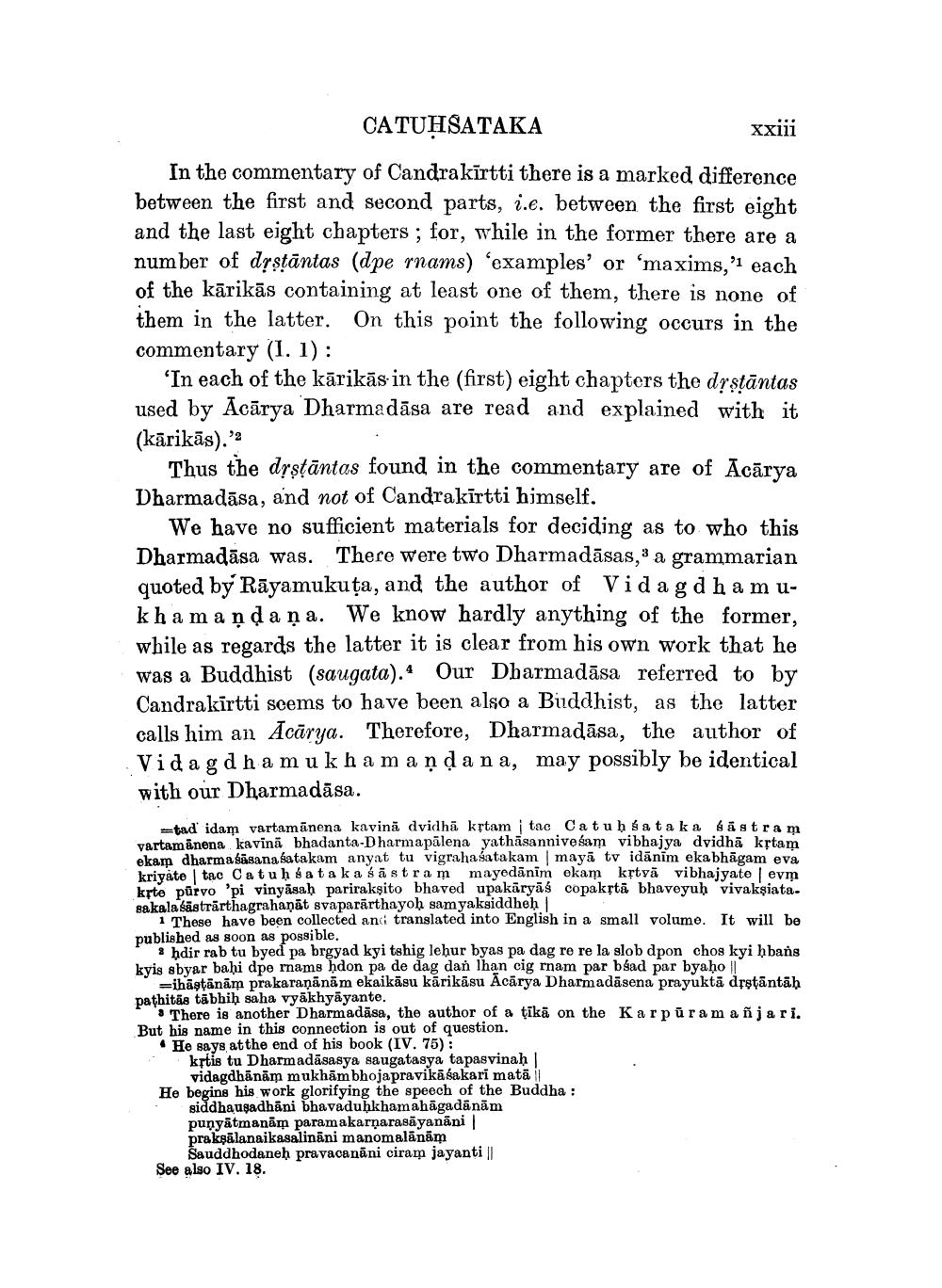________________ CATUHSATAKA xxiii In the commentary of Candrakirtti there is a marked difference between the first and second parts, i.e. between the first eight and the last eight chapters; for, while in the former there are a number of drstantas (dpe rnams) 'examples' or 'maxims, ' each of the karikas containing at least one of them, there is none of them in the latter. On this point the following occurs in the commentary (1.1): 'In each of the karikas in the (first) eight chapters the drstantas used by Acarya Dharmadasa are read and explained with it (karikas)." Thus the drstantas found in the commentary are of Acarya Dharmadasa, and not of Candrakirtti himself. We have no sufficient materials for deciding as to who this Dharmadasa was. There were two Dharmadasas, a grammarian quoted by Rayamukuta, and the author of Vida g dh a mukh a ma nda na. We know hardly anything of the former, while as regards the latter it is clear from his own work that he was a Buddhist (saugata). Our Dharmadasa referred to by Candrakirtti seems to have been also a Buddhist, as the latter calls him an Acarya. Therefore, Dharmadasa, the author of Vid a gdha mu k h a ma nda na, may possibly be identical with our Dharmadasa. tad' idam vartamanena kavina dvidha krtam i tac Catuh sa ta ka 6astram vartamanena kavina bhadanta-Dharmapolena yathasannivesam vibhajya dyidha ketam ekam dharma sasana satakam anyat tu vigrahasatakam maya tv idanim ekabhagam eva krivato tac Catuh bata ka sastra mayedanim okam kptva vibhajyate | evm krte purvo 'pi vinyasah pariraksito bhaved upakaryas copaksta bhaveyuh vivaksiata. sakala sastrarthagrahanat svapararthayoh samyaksiddheh 1 These have been collected and translated into English in a small volume. It will be published as soon as possible. hdir rab tu byed pa brgyad kyi tshig lehur byas pa dag re re la slob dpon chos kyi hbans kyis abyar bahi dpe rnams hdon pa de dag dan lhan cig rnam par blad par byaho | =ihantanam prakarananam ekaikasu karikasu Acarya Dharmadasena prayukta drstantah pathitas tabhih saha vyakhyayante. There is another Dharmadasa, the author of a tika on the Kar puramanjari. But his name in this connection is out of question. He says at the end of his book (IV. 75) krtis tu Dharmadasasya saugatasya tapasvinah vidagdhanam mukham bhojapravikasakari mata il He begins his work glorifying the speech of the Buddha : siddhausadhani bhavaduhkhamahagadanam punyatmanam paramakarnarasayanani praknalanaikasalinani manomalanam Sauddhodaneh pravacanani ciram jayanti | See also IV. 18.




